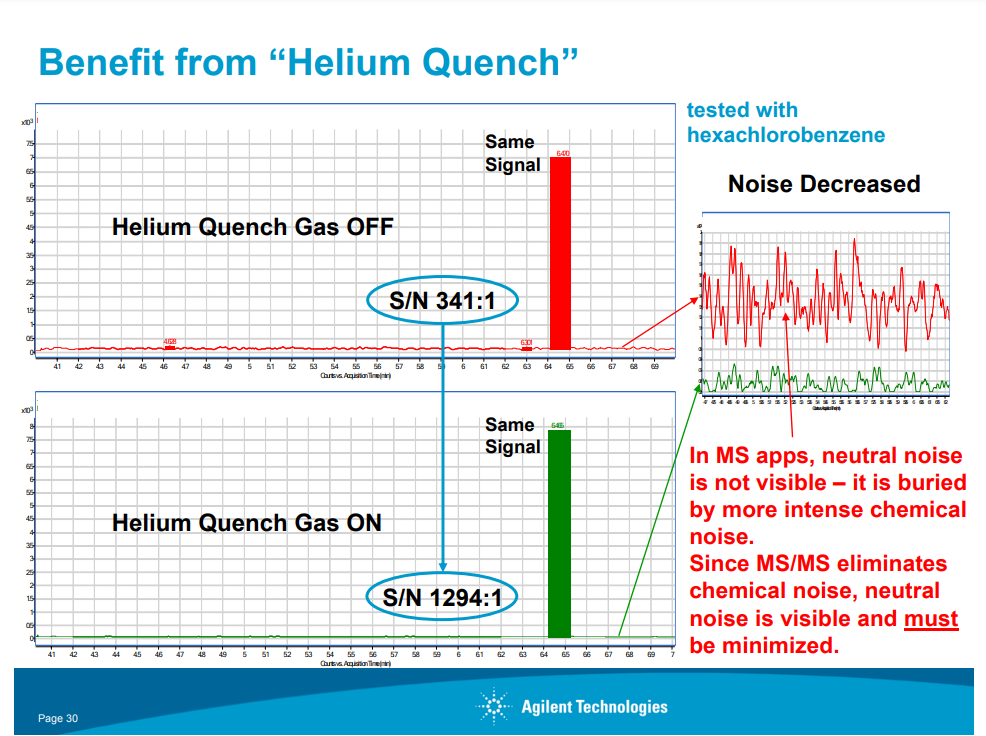Hi,
a technician told me that I should turn the quenchgas off by using hydrogen as carrier gas.
I compeared the measurements and found out: He is right. S/N is better and there are more peaks.
I wondered why? By using Helium as carrier gas you should always use Helium as quench gas, too. Otherwise you`ll get not the best S/N:

https://www.agilent.com/cs/library/slidepresentation/Public/7000BeSeminar_Dec09.pdf
does somebody knows why?
An other question:
Why should you use a 6mm instead of 3mm extractor lens for using hydrogen as carrier gas?
Thank you

